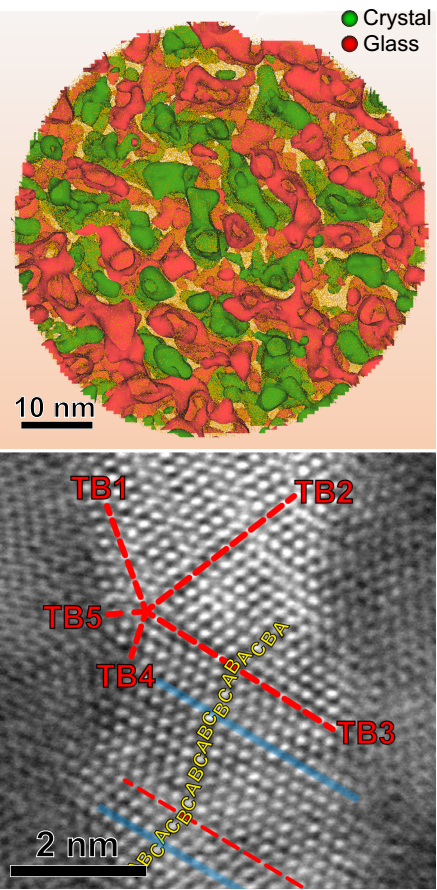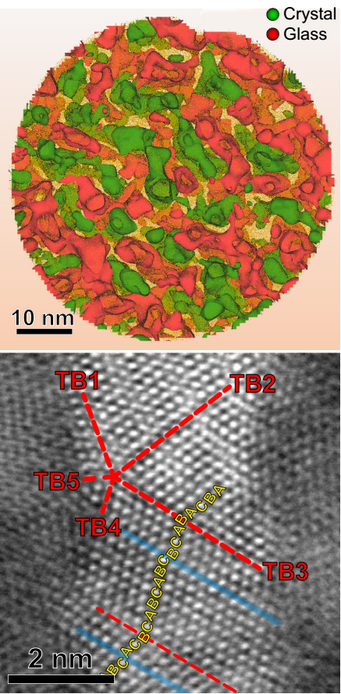Microstructure, composition and mechanical properties of crystal-glass high-entropy nanocomposites

© Max-Planck-Institut für Eisenforschung GmbH
Different from generic high-entropy alloys and metallic glasses, which are either crystalline or amorphous, respectively, we devised a novel material class in which both phases coexist. As governing quantities we control both, the stacking fault energy in the high-entropy nano-twinned crystalline phase and the glass-forming ability in the metallic glass amorphous phase in the same material, taking advantage of the most attractive properties of the two phases at the nanoscale1,2. The result is a novel CrFeCoNi-based nanocomposite consisting of nanocolumnar crystals and nanoscale metallic glass regions with near theoretical strength and homogeneous plastic flow properties.
The potential impact of this finding is immense: The concept provides alloy design guidelines that do not only enable ductile materials with near theoretical strength but can also be tuned to feature further interesting functional properties such as soft magnetism.
Upper image: Iso-concentration surfaces of a APT plane-view slice in terms of 22.7 at.% Fe and 18.3 at.% Fe threshold values, illustrating crystal and glass, respectively.
Lower image: Cross-sectional LAADF-STEM images of a columnar grain with fcc structure that contains high-density nanotwins.
